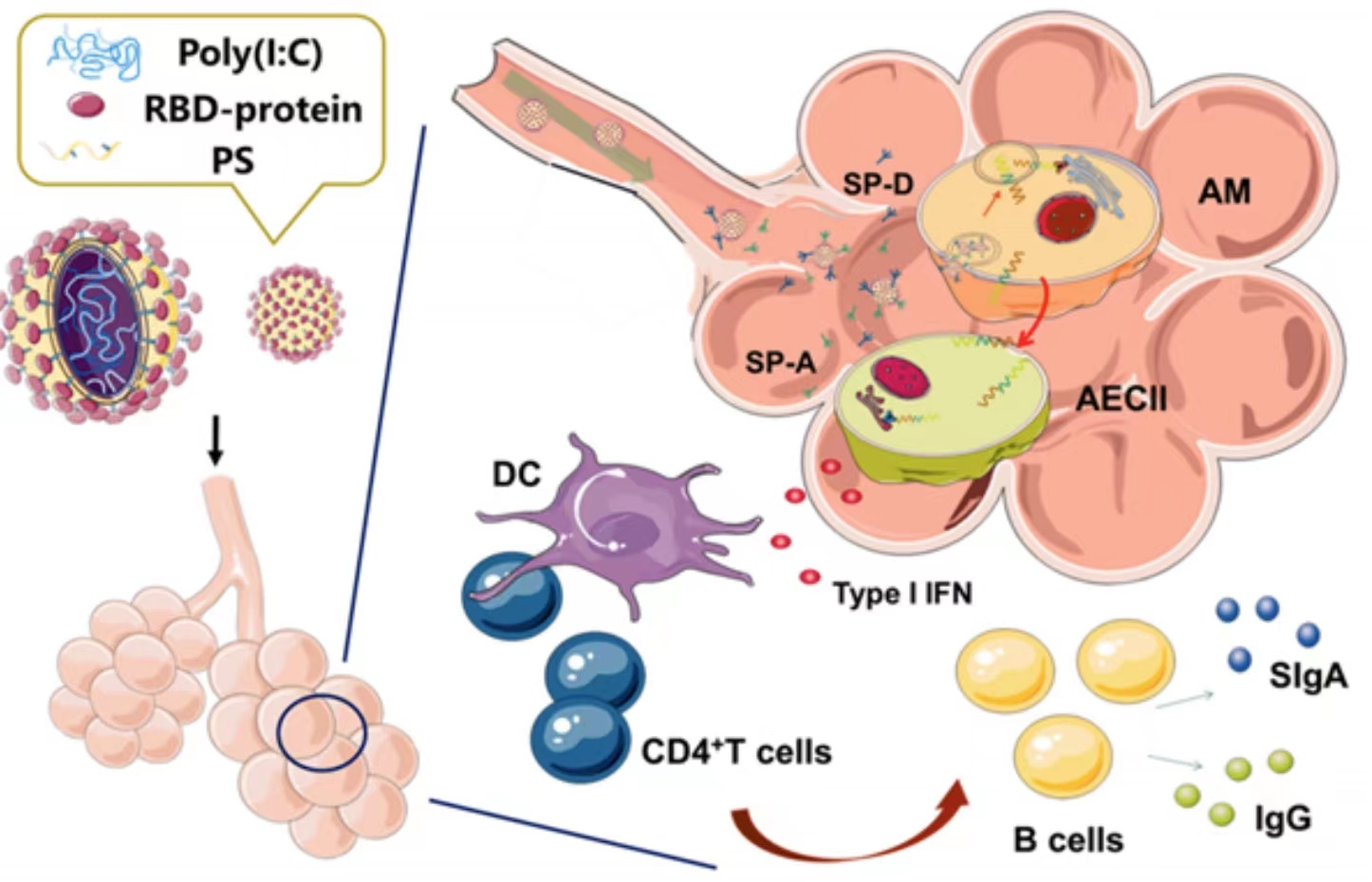The Academy of Medical Engineering and Translational Medicine successfully developed an inhalable nano spray technology. When applied in vaccination, it can trigger better mucosal immunity of respiratory tract than conventional intramuscular injection. This new technology is expected to provide a different perspective on the prevention of respiratory viruses.

COVID-19 pandemic caused by SARS-CoV-2 (a type of respiratory virus) has inflicted great havoc on the public medical system and social production on a global scale. Though several COVID-19 vaccines have gained approval of marketing and put into use, they are inoculated through intramuscular injection, which not only causes pain but also may not effectively trigger mucosal immunity of respiratory tract. In addition, the appearance of COVID-19 mutants also requires upgrading the common way of inoculation.
Activating mucosa immunity plays a pivotal role in protecting human body against respiratory viruses, as respiratory mucosa functions as the first shield against these enemies. With this inspiration, this new inoculation approach was born, and works as follows.
The "capsid" is composed of biomimetic pulmonary surfactant liposomes (bio-PS), a chemical which can be efficiently bound to alveolar macrophages, making it easy for the vaccine to enter the body. The receptor binding domains (RBD) connected to the outer layer of bio-PS are distributed in the outermost layer of virosome as "spike protein", which simulates the natural spatial structure of a single antigen of the virus; Poly (I: C) nucleic acid in the core of virosome as an immune adjuvant can stimulate the natural immune pathway of Toll like receptor 3 (TLR3), and improve the activation of immune system in a safer way.
The experiments on animals indicate that compared with intramuscular and subcutaneous injection, inhalable inoculation is more effective in activating respiratory mucosal immunity because it can result in the secretory immunoglobulin A (sIgA) with higher titer in respiratory mucosa, which can potently prevent virus infection via respiratory tract by neutralizing viruses.
The findings above were officially published on Chemical Engineering Journal in August 2021 with the title of Inhalable Nanovaccine with Biomimetic Coronavirus Structure to Trigger Mucosal Immunity of Respiratory Tract Against COVID-19. The Academy of Medical Engineering and Translational Medicine, Tianjin University is the first unit of the paper and Associate Professor Zheng bin and master Peng Wenchang from the Academy are the co-first authors.
By Cheng Sheng
Editor: Eva Yin






